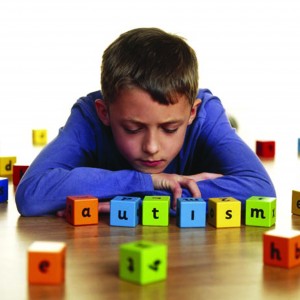In 2013, the Centers for Disease Control estimated one in fifty children had been diagnosed with some autism spectrum disorder (ASD.) ASD occurs in all cultures and ethnic, socioeconomic, and racial groups. It is also five times more likely to occur in boys.
ASDs are characterized by a restricted range of interest, repetitive behavior, delayed language, disordered language, and impaired social interaction. Additionally, sleeping disorders, such as insomnia, are much more prevalent among those with ASD. They are 80% more likely to have sleep disorders than those without ASD. Children with ASD are also three-and-a-half times more likely to have gastrointestinal disorders.
Causes of Autism
In the 1950s, it was believed that autism was caused by a mother being cold or distant to her child. Though there is not any research to support it, this belief still has some influence on parenting behavior in the 21st Century. Similarly, in the 1970s and 1980s, autism was linked to the rise in cable television, suggesting it was caused by too much TV. But, again, this is not supported by research.
The specific causes of autism are still a mystery. Research has identified factors that likely contribute to ASD development. One of these factors is believed to be genetics. Studies have shown that siblings of autistic children are fifteen to thirty times more likely than the general population to also have autism.
There are also prenatal and perinatal factors associated with autism. These include maternal and paternal ages over 30, use of certain prescription medications during pregnancy, gestational diabetes, bleeding after the first trimester, and meconium in the amniotic fluid.
The Autism Spectrum
The term autism spectrum disorder is used to describe a broad range of pervasive developmental disorders. Each of the specific disorders described by ASD exhibit the characteristics mentioned above. Below I will list each of the pervasive developmental disorders and describe them in more detail:
- Autism – neural development disorder exhibiting repetitive, restricted, or stereotyped behavior and impaired verbal and non-verbal communications and social interactions.
- Asperger syndrome (AS) – people with AS have relatively preserved cognitive and linguistic development but exhibit all of the other symptoms listed above.
- Pervasive developmental disorder not otherwise specified (PDD-NOS) – according to the Diagnostic and Statistical Manual of Mental Disorders (Fourth Edition), PDD-NOS is the “severe and pervasive impairment in the development of reciprocal social interaction or verbal and nonverbal communication skills, or when stereotyped behavior, interests, and activities are present, but the criteria are not met for a specific PDD.”
- Childhood disintegrative disorder (CDD) – this is a low-functioning ASD characterized by late onset (after the age of three.)
- Rett syndrome – Rett syndrome is set apart from the other ASDs in that it almost exclusively affects females. It is a disorder of the brain’s grey matter. Those with Rett syndrome have small hands and feet and slowed head growth.
How is ASD treated?
When they receive early interventions, children with autism have a much greater chance of improving their development and ability to learn important skills. The problem is that there are long waits for children to get into a doctor to get diagnosed with ASD. Another problem is symptoms may be hard to spot early on.
Every case of ASD is unique. Therefore, each child needs a treatment plan specifically designed for him. This will require working with a qualified health professional, such as an applied behavior analyst. The treatment provider will likely use a combination of dietary adjustments, medication plans, behavioral interventions, and the creation of regular schedules, since ASD sufferers like to have a predictable environment.
ASD is an increasingly prevalent disorder in the United States. It is important to accurately diagnose children who may have ASD early on in their lives to temper its effects.
(http://www.thestar.com/life/parent/2013/07/05/kids_with_autism_benefit_from_outdoor_classroom.html)

